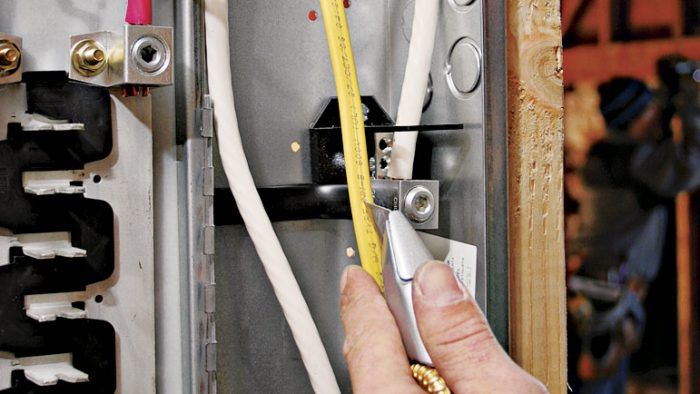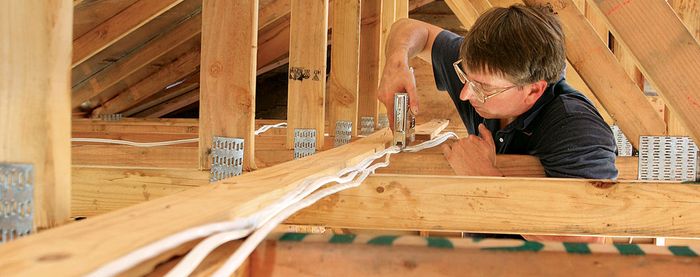
Only a licensed electrician should work inside a panel.
When adding a circuit to an existing panel, first cut the power to the panel and test to be sure it’s off. If working in a subpanel, turn off the subpanel breaker in the service panel, where feeds to the subpanel originate. If working in a service panel, the area about the main lugs will always be hot—even when the main breaker is off—so take care to avoid that area and wear appropriate safety equipment. After disconnecting power to the panel, remove its cover, determine where the new circuit cable will enter the panel, and use a sturdy pair of needle-nose pliers or a screwdriver to jab out a knockout 1. Into the knockout, install the appropriate cable connector (clamp) for the cable you’re using—in our sequence, NM cable (Romex). Pull the cable through the connector, and tighten the connector to prevent strain on electrical connections 2. To avoid stressing connections, staple incoming cable within 12 in. of the panel.
Score the cable sheathing by making two diagonal passes and sliding the sheathing off. Or score the sheathing lightly down the middle 3, peel back the sheathing, and use diagonal cutters to snip it off. Leave at least 1⁄4 in. of sheathing sticking into the panel. Snap the breaker onto an open space on the bus bar, then rough-cut cable wires so they will be long enough to reach that breaker—you can trim off excess later. Separate the ground, neutral, and hot wires and strip about 3⁄8 in. to 1⁄2 in. of insulation off the ends of insulated wires. Torque all bus and breaker lug connections as specified by manufacturer.
Excerpted from Wiring Complete, 3rd Edition (The Taunton Press, 2017) by Michael Litchfield and Michael McAlister
Available in the Taunton Store and at Amazon.com.









